How Big Inflatable Yellow Ducks Became Mascots for Thai Protesters
November 19, 2020Ducks have joined the pro-democracy movement in Thailand. Large, yellow, inflatable ducks, to be precise.
For months now, Thais calling for the prime minister to step down and for reforms to the powerful monarchy have used creative signs, costumes and songs to get their messages across, with a major demonstration earlier this year using outfits from the “Harry Potter” movies.
The pro-democracy ducks entered the fight on Tuesday in a demonstration outside parliament as lawmakers considered a number of proposed reforms and amendments most of which were later rejected, fueling anger and frustration.
Frontline protesters used them as attempted shields against water cannons as police also fired tear gas in a chaotic day that saw dozens injured, including an estimated six people who suffered gunshot wounds in clashes with rival royalist supporters, though there was little information available about their condition.
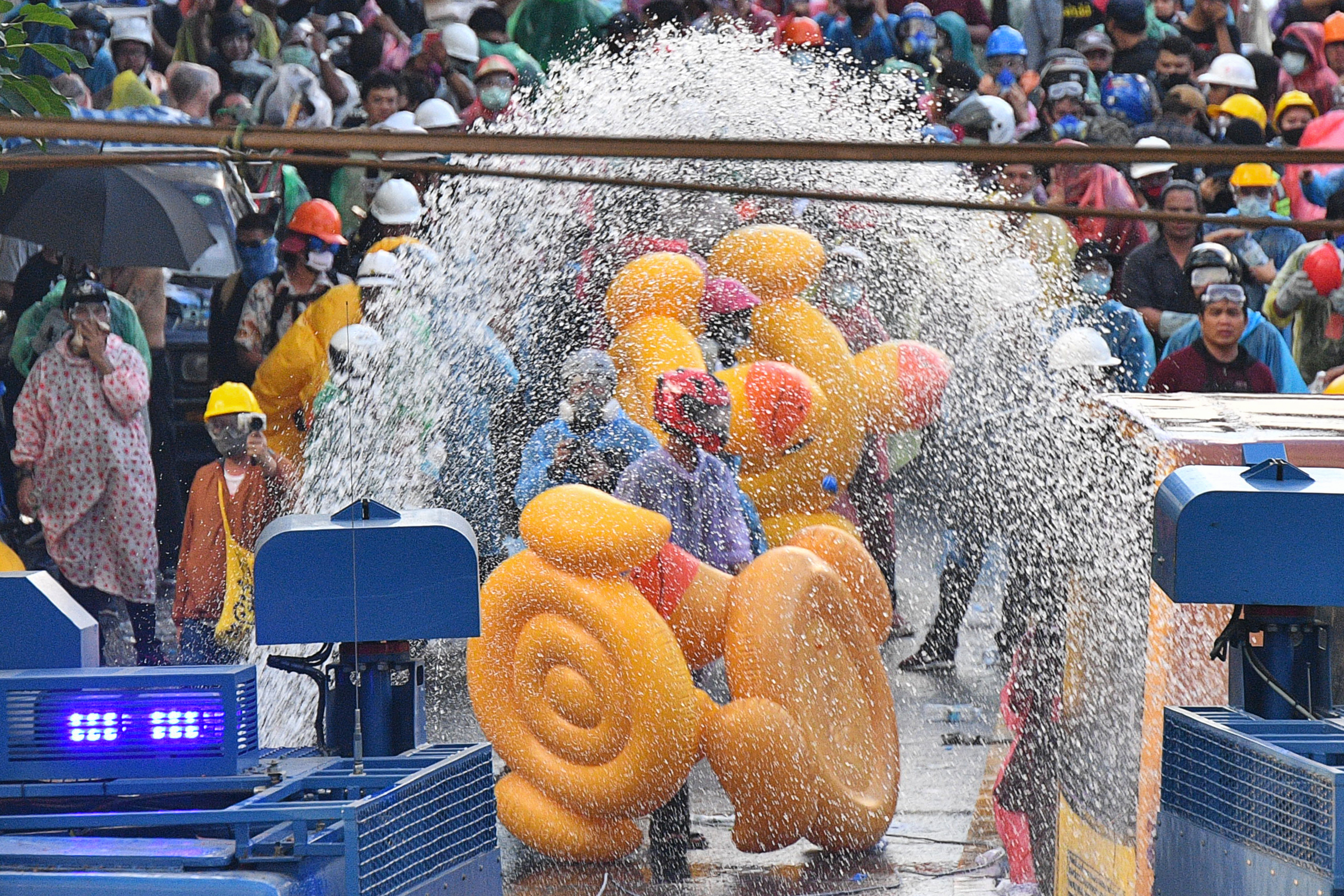
Human Rights Watch urged authorities not to use “excessive or unnecessary force against demonstrators, while preventing violence by any group so the situation doesn’t escalate out of control.”
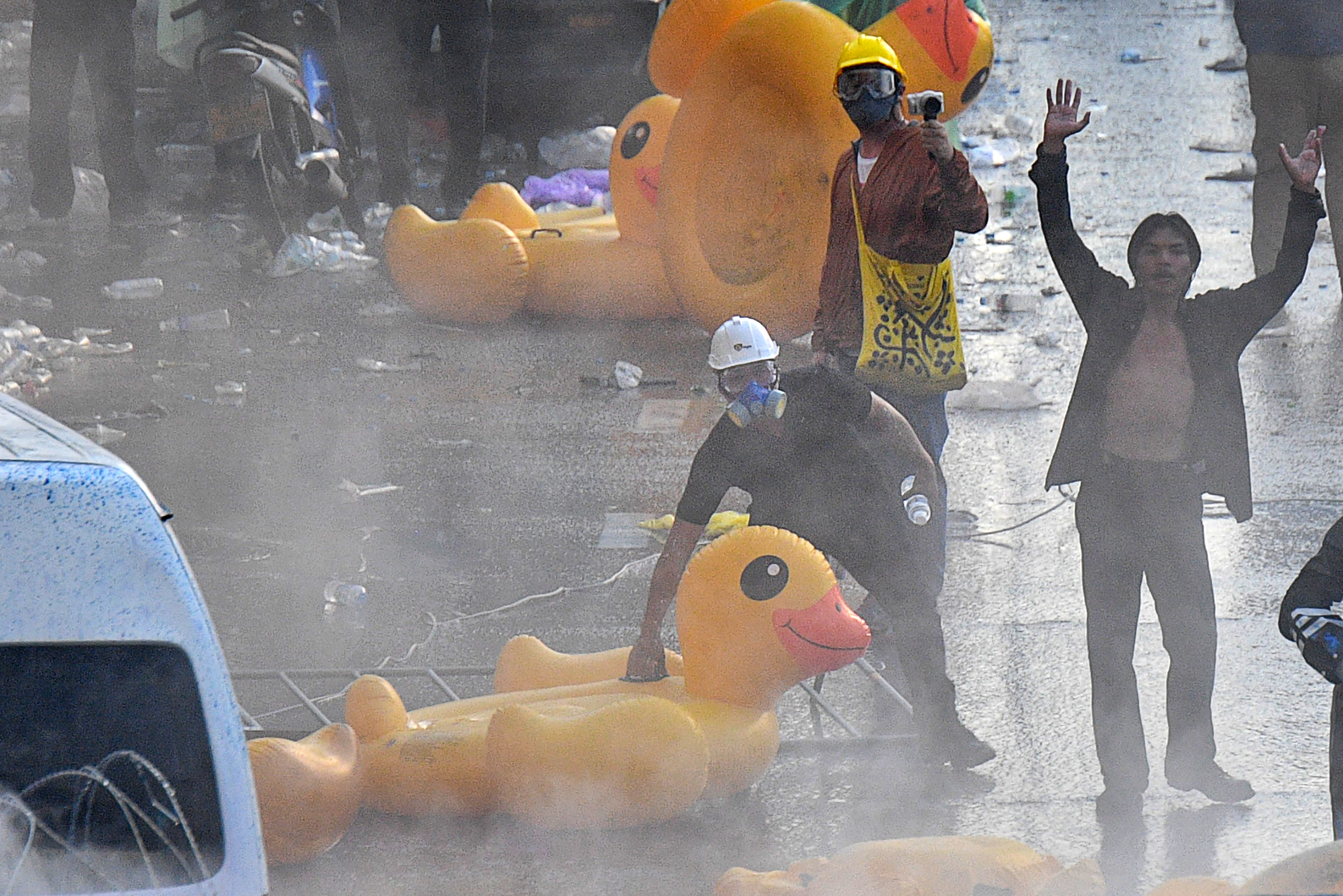
A day later, thousands gathered outside police headquarters in downtown Bangkok, where they vented their fury by spray-painting the road with anti-government and anti-monarchy graffiti while splattering signs outside the compound with buckets of paint. Police hunkered down inside but there were no clashes.
The ducks were in the thick of the action, placed at the front line of the demonstration and carried around by protesters in a carnival-like vibe and as a symbol of resistance.
“The rubber ducks have become heroes, sacrificing their ‘lives’ as protection from the water cannons during violent dispersal,” one activist on the ground who asked not to be identified told VICE World News.
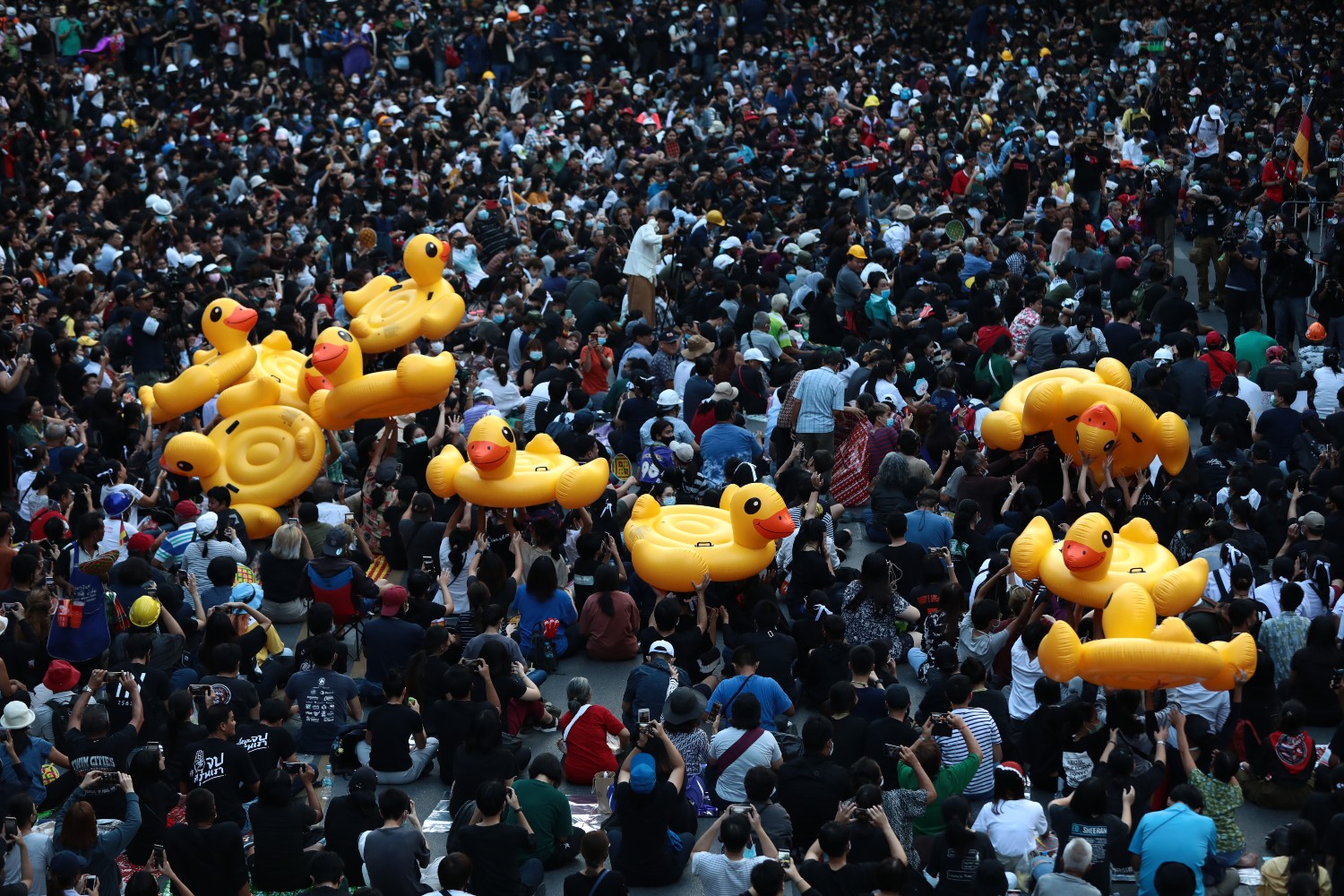
They were passed from person to person, put atop cars, and arranged in rows as a symbolic line of defense. According to media outlet Thai Enquirer, the protesters coined the name “little duck” to describe the mascot, and its yellow color is an appropriation of the yellow shirts worn by pro-royalists. Charlie Thame, a lecturer at Bangkok’s Thammasat University, told VICE World News that ducks also appeared at Hong Kong protests. Memes and arts from supporters of that movement quickly spread on Twitter.
When on the ground, they became the must-have photo or selfie of the night on Wednesday, with hundreds taking their turn to get a shot. Many sat on the ducks and flashed the three-fingered salute from the “Hunger Games” movies, the iconic gesture of the Thai movement.
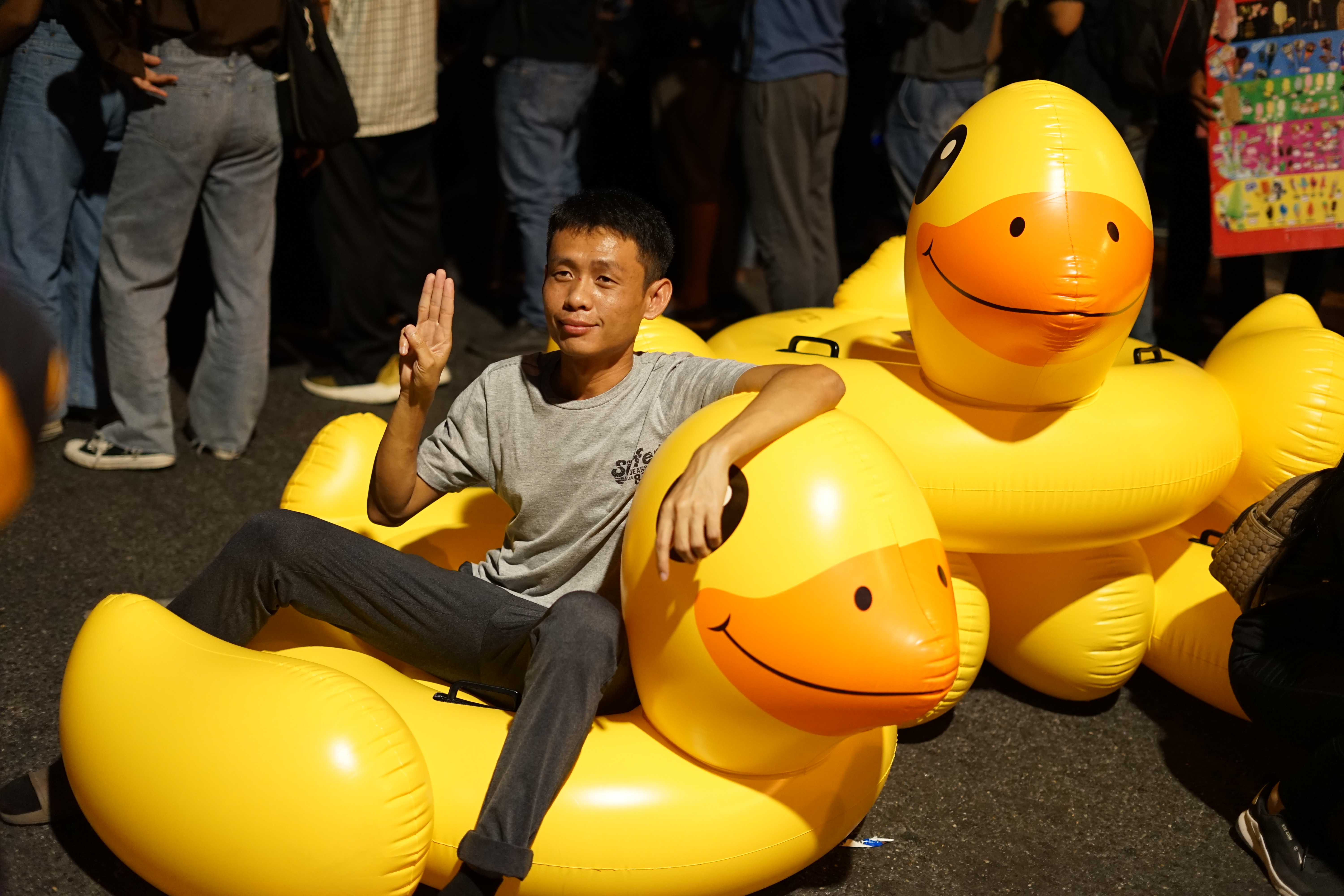
The protests that have gripped Thailand over the last several months have not achieved many of the bigger goals around structural change. But unlike past street demonstrations in the politically turbulent country, they have shifted the debate entirely over the county’s rich and unassailable monarchy, which is protected by defamation laws that carry prison terms of up to 15 years.
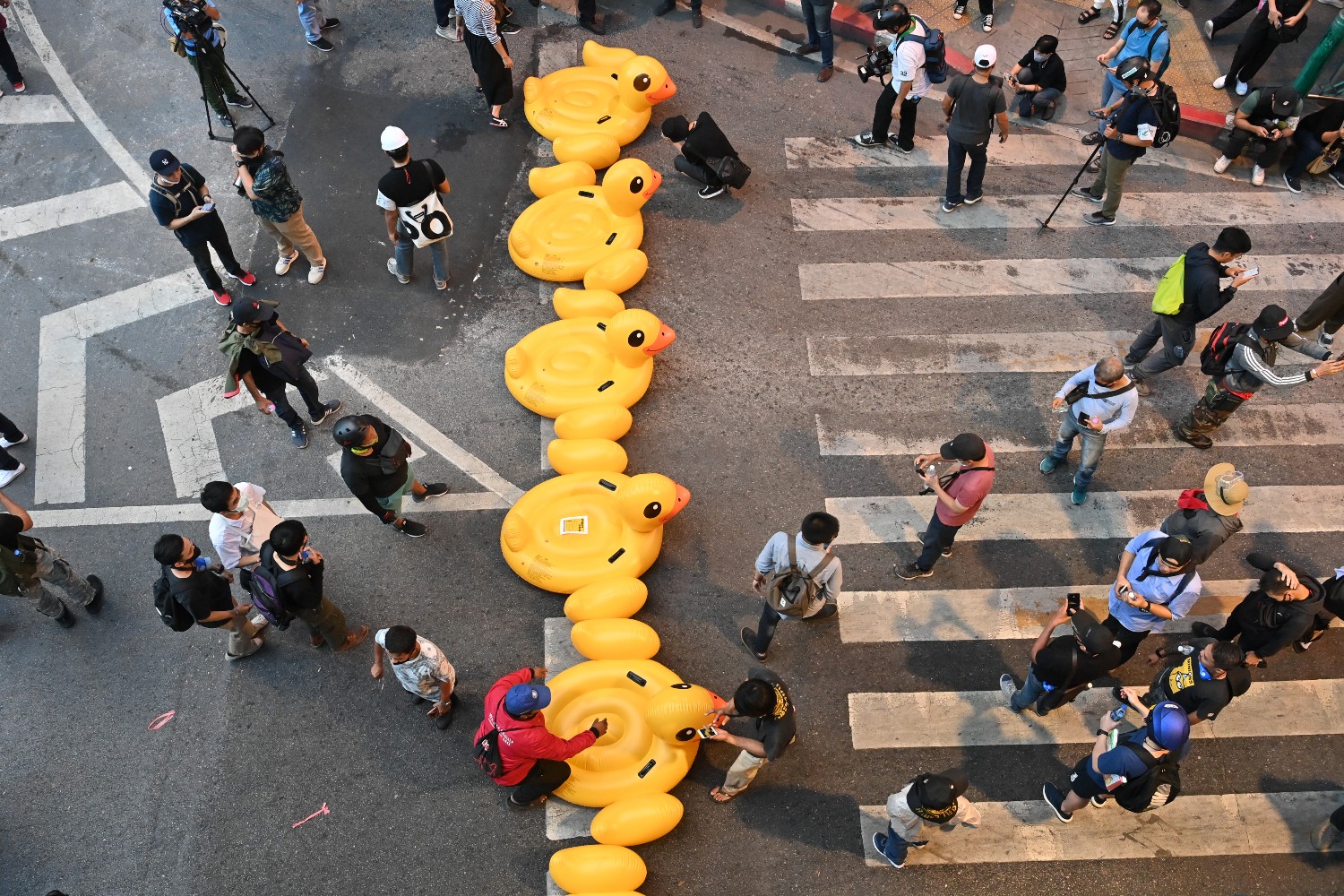
Until recently it was unthinkable to critique or debate the royal family in public, but it has become the norm at protests, online and in coverage of the events. Thai King Maha Vajiralongkorn has countered with a charm offensive, including spending more time in the country and away from his villa in Germany. He has personally greeted crowds and talked to supporters, given a rare interview, and even rode an underground train, all unprecedented actions by the normally elusive 68-year-old monarch.
